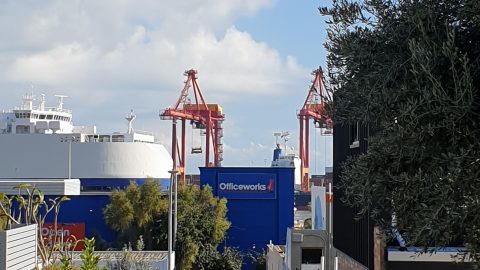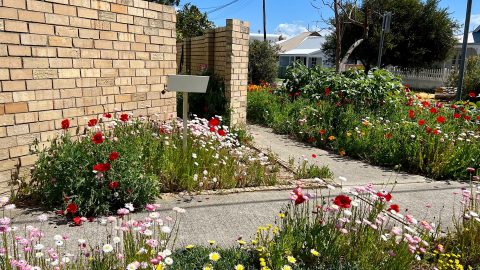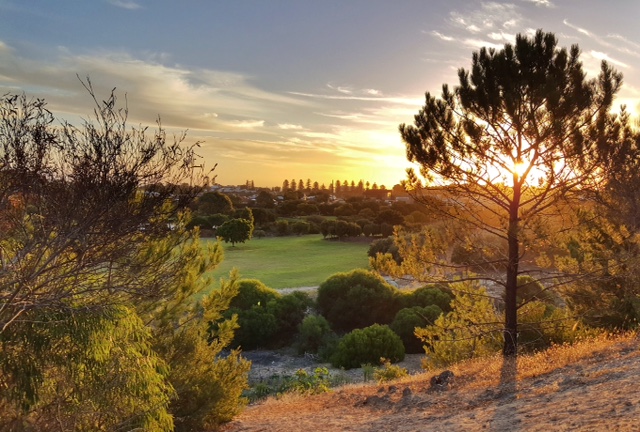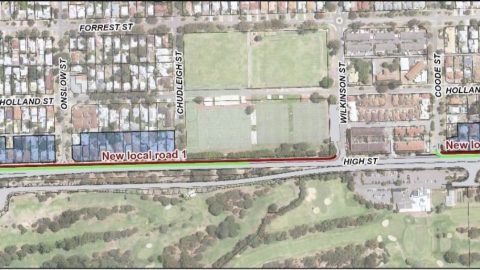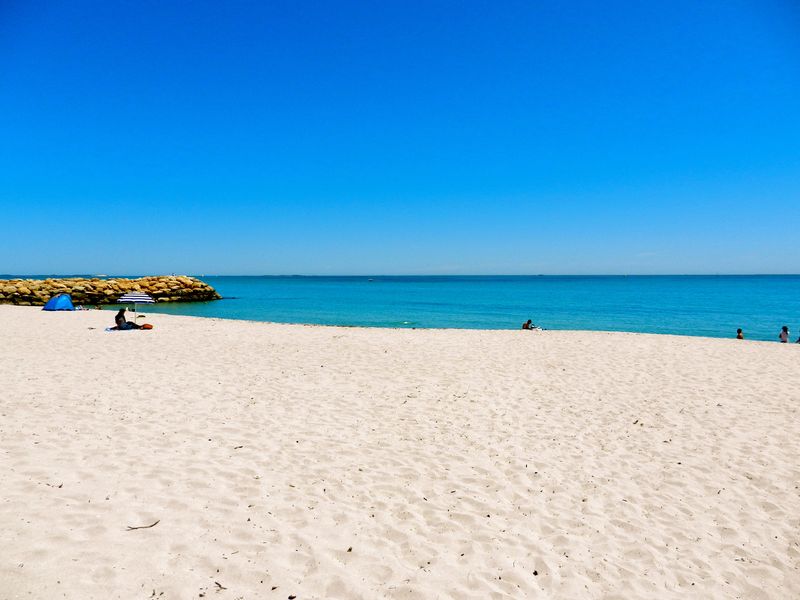This is the third instalment of our popular feature The Streets of Fremantle bringing together the derivation of our City’s street names.
In our first instalment we covered The Streets of Fremantle, A-C, From Ada To Cypress.
In our second instalment we covered The Streets of Fremantle, D-F, From Dale to Fullston.
As we explained in the first instalment, our aim is to produce a survey of all the current streets of the City of Fremantle with the derivations of their names. Occasionally we mention old ones that have changed name or ceased to exist.
Our survey is based on Miss Kate Caldwell’s epic 1931 work and more recent work by the Fremantle History Centre and research by Dr Garry Gillard who compiles the invaluable resource, Fremantle Stuff.
In the entries below, we use FHC to refer to the Fremantle History Centre’s entries, KC to refer to Ms Caldwell’s, and FS to refer to Dr Gillard’s work.
We encourage you, our readers, to email us additions and corrections and to provide information where we have ‘No information’.
AND NOW WE TURN TO STREETS G-I.
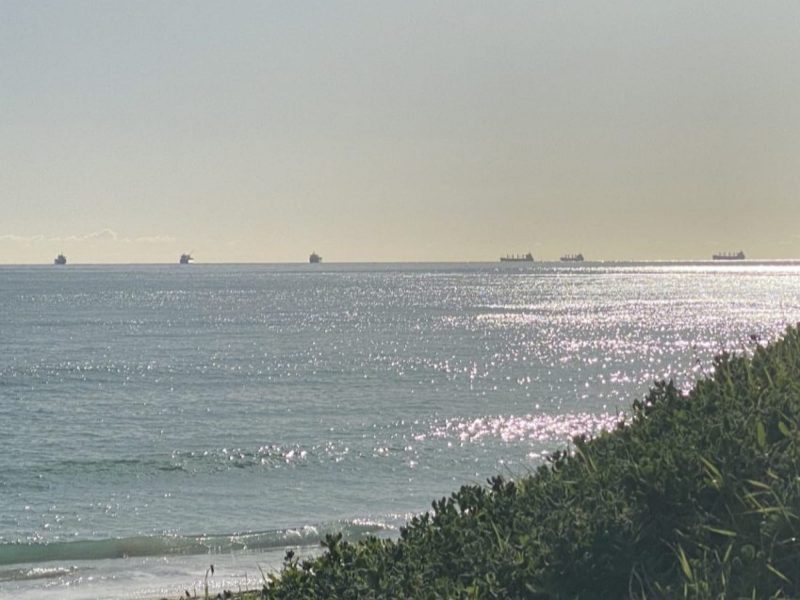
Gage Roads, Fremantle Harbour
FHC – after Admiral of the Fleet Sir William Hall Gage (1777-1864) This is a sea channel used as a shipping lane and anchorage for vessels entering Fremantle Ports. Gage had also been Commander in Chief in the East Indies.
Gallipoli Street, South Fremantle – Now part of Daly Street
FHC – after the Gallipoli Campaign (WWI) which ran from 25 April 1915 to 9 January 2016. It resulted in a victory for the Ottoman Empire. The landing at Gallipoli on 25 April 2015, is highly significant in Australia and New Zealand. It ran south from Jenkin Street but stopped before Scott Street and became Daly Street in 1951-52.
KC – Occupation of the Gallipoli Peninsula by the British forces in 1915, Commemorating the landing of the Anzacs on April 25, 1915.
Gallop Street, Hilton
FHC – after the Gallop family who had settled in Dalkeith but were also old residents of Fremantle. James Gallop laid the foundation stone for the King’s Theatre on South Terrace in 1904.
KC – The Gallop family settled at Dalkeith, near Claremont, but were also old residents of Fremantle, the late Jas. Gallop building the King’s Theatre.
FS – The family of former Premier Geoff Gallop were early (1829) settlers, establishing themselves not only in Dalkeith but also in Fremantle. Dalkeith House is in High Street just east of Queens Square; and James Gallop built the King’s Theatre, which now currently houses the Metropolis nightclub.
Garling Street, O’Connor
FHC – after Frederick Garling who was an artist on the HMS Success, which sailed into Fremantle in 1827.
George Street, North Fremantle – Now White Street
George Street, South Fremantle, later changed to Gold Street
Gibson Street, Beaconsfield
FHC – after Mr Gibson a former employee of Fremantle City Council.
KC – FE Gibson was Mayor of Fremantle in 1920, 1922, 1927, 1931.
FS – Frank Gibson was Mayor 1920-1923, 1927-1929 and 1929-1951. The netball park on High Street with the loud PA is also named after him, as (Frank) Gibson Park. The local precinct is called Gibson Park Precinct, although it extends all of the way south to Stevens Street.
Gilbert Fraser Oval, North Fremantle
FHC – after Gilbert Fraser (1894 – 1958) a Member of the Legislative Council of WA (1928 – 1958). He was also president of the North Fremantle Amateur Football Club (1932 -1941, 1946 – 1953). Oval named in 1963.
Girton Lane, Fremantle
FHC – near High Street and Ellen Street, adjoining the old Girton College campus
FS – Adjoins the former Girton College campus. Gives access at the rear to the garages of houses facing onto either Ellen or High Streets. It has two ways in, each one only the width of one vehicle, but all of it is two-way.
Gold Street, South Fremantle
FHC – with Coral and Silver Streets, Gold Street was surveyed on the subdivision of a large block of land owned by the late Sir Henry Briggs, President of the Legislative Council (d. 1919). The names were apparently purely fancy as the white sand,was called Briggs Paddock covered with rushes, contained land, but had no mineral wealth.
Goldsborough Street, Fremantle
FHC – after Goldsborough Mort, the nearby, original woolstores owner.
FS – came into existence probably in 1927 when Goldsbrough Mort built the ‘northern’ woolstore between that street and Edward (now Parry) Street. It was formerly known as New Point Street and Mort Street. Named for Goldsbrough Mort whose woolstore was adjacent, after Richard Goldsbrough (1821-1886), the founder.
Gordon Road, Beaconsfield
FHC – after Robert Gordon, the owner of the Tyrone Orchard, North Lake until 1920.
Gough Place, Samson
FHC – after CA Gough who served as a North Fremantle Councillor for thirteen years.
Government Road, Fremantle, was near Hines Road, York Street, Clarke Street, O’Connor
Greer Lane, Beaconsfield
FHC – after Phibbs Greer (1890 – 1965). Greer served as a private in the 48th Battalion of the AIF in WWI. He was wounded in the Battle of Villers-Bretonneux. After the war Greer worked on the Great Boulder Mine in Kalgoorlie before returning to Fremantle around 1948. From then on he worked as a waterside worker for the Association of Waterside Labour until retirement.
Grey Street, Fremantle
FHC – after Henry George Grey, 3rd Earl Grey
(1802 – 1894). Grey was Secretary of State for the Colonies 1846–1852 under Prime Minister Lord John Russell – after whom Russell Street is named.
KC – Henry Geo. Grey, Viscount Howick (1802-1894) afterwards Third Earl Grey, called also Lord Grey, Secretary of State for the Colonies 1846-1852 during the administration of Lord John Russell. Until the ‘nineties Hay-street east of the Town Hall, Perth, was called Howick-street.
Griffiths Place, Hilton
FHC – after WP Griffiths, who was a Town Councillor, 1931-1945 and 1948-68.
Grigg Place, Hilton
FHC -after A Grigg, who was a Town Councillor in 1925.
Grosvenor Street, Beaconsfield
FHC – possibly after Grosvenor Hospital, in South Street, or, the ‘Grosvenor Cellars’ a wine and spirit business on the corner of High and Bannister Streets, opened by George Alfred Davies. Davies’ Grosvenor wines were famous all over the colony.
FS – George Alfred Davies built a house on what is now the corner of South and Field Streets on the farm which he obtained by foreclosure from the Curedale family. (Before that, its first owner was Henry Maxwell Lefroy.) I assume he named the house ‘Grosvenor’, as it was later the Grosvenor Hospital, and also as ‘Grosvenor Cellars’ was the name of his wine and spirit business in High and Bannister Streets. Davies’ Grosvenor Wines were well-known in the colony. The TAFE training restaurant in the street was called the Grosvenor. (The TAFE college has now been demolished.)
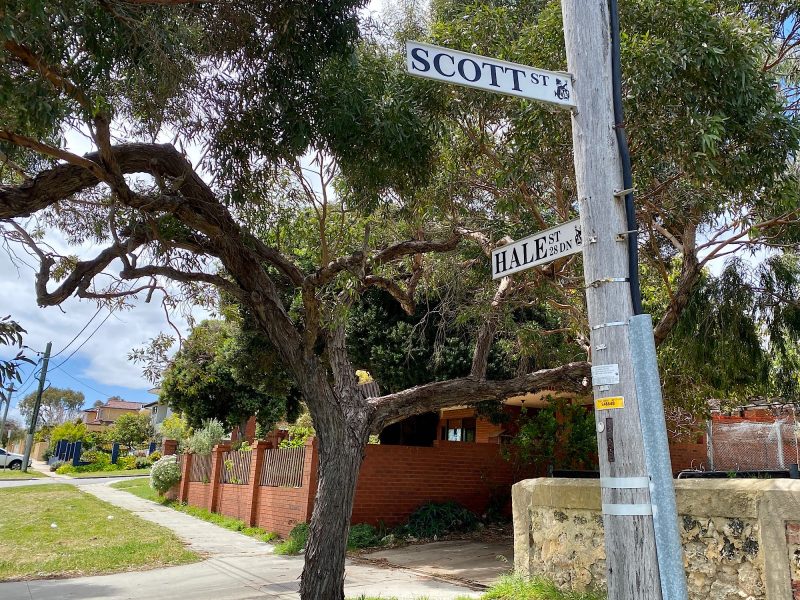
Hale Street, Beaconsfield
FHC – after brothers, Edgar and Vernon Hale, who were athletes in Fremantle before WWI. Edgar was killed in WWI and Vernon died after returning to WA as a result of his wounds. Previously called Healy Road/Street, changed 1956/57.
Hallion Way, Samson, see Wellesley Way
Hampton Avenue, now Dale Street
Hampton Road, Beaconsfield, Fremantle, South Fremantle
FHC – after John Stephen Hampton (1806 – 1869), who was Governor of Western Australia from 1862 to 1868. His son, GE Hampton was Acting Comptroller-General of the Fremantle Convict Establishment.
KC – The Governor from 1862 till 1868 was John Stephen Hampton. He had previously been Comptroller of Convicts in Tasmania. His son, G. E. Hampton, was Acting Comptroller-General of the Fremantle Convict Establishment, and possibly Hampton-road is intended to perpetuate his name. Hampton-street lost its identity when the name was changed to Alexander-road, Laurence Alexander the Fremantle representative of Falk & Co., being Mayor in 1902. The postal authorities considering the name was being confused with Alexandra-road in East Fremantle, it became Wray-avenue. Wm. Wray, who had property in the street and was at one time with the Education Department as Truant Inspector, was Mayor in 1915-1918.
FS – John Stephen Hampton (1806-1869) was an unpopular Governor 1862-68. He appointed his son George Hampton as Acting Comptroller-General of the Fremantle Convict Establishment, but the road was named to honour the governor.
Hampton Street, Fremantle – Now Wray Avenue. Originally Hampton Street until 1901-1902, then named Alexander Road. Renamed Wray Avenue in 1923.
FS – named after Governor Hampton, had its name changed to Alexander Road, and then Wray Avenue, qv. One 1865 map shows what is named Wray Avenue as Hampton Road, while the road which is now Hampton Road is un-named on the map. The change from Hampton to Alexander may have been made because there had been a decision to name the more important road after the governor, requiring a name change to the lesser. However, another 1865 map has Hampton Street.
Hanlin Way, Samson
FHC – after Reverend Robert Hanlin (1855 – 1933) who was the first minister of the Fremantle Scots Presbyterian Church, 1886 – 1919.
Harbor Street, North Fremantle, later Lime Street
FHC – The Lime Street name is associated with quarrying of limestone for the inner harbour. Changed to avoid confusion with Harbour Road, South Fremantle.
Harbour Road, South Fremantle
Ed note – FHC say of this road in South Fremantle that it was ‘the road alongside the Port Authority (previously named Harbour Trust)’. But that is obviously not so, as it is nowhere near the port.It is however parallel to Orient Street and Commercial Road and perhaps the name has something to do with commerce. More information needed.
Harbour Trust Road, Fremantle
FS – Road alongside the Fremantle Ports building, at ‘1 Cliff Street’. Fremantle Ports was previously called the Fremantle Harbour Trust and then the Fremantle Port Authority.
Harvest Road, North Fremantle
FS – Probably for ED Harvest, who commanded the Enrolled Pensioner Guard after Finnerty.
Harwood Street, Hilton
FHC – after Joshua Josiah Harwood (1823 – 1897). English-born Harwood who was a member of Fremantle Council from 1862 to 1866. He was also involved in the Fremantle Town Trust and was chairman of the Fremantle Mechanics Institute in 1866.
Haywood (?), North Fremantle (?) – More information required
FHC – have an entry fro this street or road, but it doesn’t appear in the latest road maps. FHC say it was named after FT “Theo” Haywood ( – 1988), who was a foundation Associate Member of Leighton Surf Life Saving Club (SLSC) and Treasurer between 1936 and 1940. He was an ambulance officer between 1937 and 1939 and Australia between 1936–1940 and 1948–1974. He was made a life member of both Surf Life Saving Western Australia and Surf Life Saving Australia in 1957.
Heales Street – Now Taylor Street, White Gum Valley
Ed notes – More information required.
Healy Road/Street, Beaconsfield – Later changed to Hale Road
FHC – after John Healy who was the owner of the Winterfold Estate and was made a Police Constable in 1867. He was a life-long supporter of Home Rule for Ireland. Changed to Hale Road 1956–1957.
KC – This street leads to the property, ‘Winterfold’, of John Healy, who died in 1898.
FS – led to ‘Winterfold’, John Healy’s property (d. 1898). Presumably Winterfold Road is named for that.
Editor’s note – it appears the Healy Road/Street referred to by FHC and KC is different from the Healy Road, Hamilton Hill, which, as FS records, went through ‘Winterfold’ (qv), John Healy’s (d. 1898) large property which took up most of what is now Beaconsfield and more.
Hebbard Street, Samson
FHC – after the Hebbard family who were business owners in Beaconsfield for fifty years.
Helen Street, North Fremantle – Changed to Turton Street
ed note – More information required.
Henderson Street, Fremantle
FHC – after Sir Edmund Yeamans Walcott Henderson (1821 – 1896). Henderson was the first comptroller of convicts in Western Australia; he arrived June 1850 aboard the first convict ship, Scindian. Henderson was responsible for the construction of Fremantle Prison and the warders quarters in the street that bears his name.
KC – Captain Henderson, R.E., arrived in the Scindian on June 1, 1850, in charge of the first batch of convicts. He built the Convict Establishment, which bears the inscription V.R. 1855, and also the warders’ quarters in the street which bears his name.
Henry Street, Fremantle
FHC – after John Henry Henry, the second lieutenant of the HMS Challenger under Captain CH Fremantle for its 1829 voyage. He explored the Canning River.
KC – Second Lieut. John Henry, of H.M.S. Challenger, who explored the Canning River, Mt. Henry also bears his name.
Henville Street, Fremantle
FHC – after Sampson Henville, a Town Councillor 1907-1910. Originally named Ellington Street, changed 1909/10.
Herbert Street, North Fremantle
FHC – after JH Herbert, a Town Councillor 1876–1885. Originally Mary Street, it was changed in 1922– 1923.
Hevron Street, North Fremantle
FHC – Originally known as Frederick Street; changed to Hevron Street in 1893.
FS – Hevron was Mayor of North Fremantle 1905-06, and councillor 1897-1900 (? or -1920). Originally known 1893 as Frederick Street, changed 19 January 1923.
Hewitt Street, South Fremantle. Changed to Daly Street in 1909–1910.
Hickory Street, South Fremantle. Originally named James Street, changed 1901– 1902.
Ed notes – More information required.
Hicks Street, North Fremantle
FHC – This name was used for a short street which ran off the former Bruce Street as part of a small lot subdivision of an earlier Pensioner Guard allotment. The street ultimately formed part of the Fremantle Steam Laundry land.
FS – his name was used for a short street which ran off the former Bruce Street as part of a small lot subdivision of an earlier Pensioner Guard allotment. The street ultimately formed part of the Fremantle Steam Laundry land. Hicks Street is now the name of a one-way street in the Northbank locality, running from Burns Streets to Pensioner Guard Road after which it becomes Bick Lane.
High Street, Fremantle
FHC – Named by Surveyor General Roe in the tradition of the main streets of English towns. Following the completion of the Town Hall in 1887 the roadway was constructed east of William Street by convict labour. Prior to that, the street was practically only a beaten track leading to Briggs’ Boys School, erected in 1885. High Street around the Town Hall closed to vehicular traffic in 1966.
KC – This street was named by Surveyor-General Roe, being the main street of the town, as was customary in English towns. It was not till the completion of the Town Hall in 1887 that the roadway was made eastward of William-street by convict labour. Previous to that the street was practically only a beaten track leading to Briggs’s Boys’ School (now Girton C. of E. College) erected in 1885. The boarders of this school used to stay in a house rented by the management at the corner of High and Queen-streets, now adjoining the Victoria Hall. It is still standing, and is one of the oldest occupied houses in Fremantle. Monument Hill in those days, although rocky, was a dense thicket of parrot-bush, but it was quickly cleared by the dwellers in Canvastown, which was established In the early days of the gold rush to the Colony, about 1894. and was situated to the east of the hill. These hessian houses had their day and ceased to be when the authorities were able to cope satisfactorily with the influx of population.
FS – Surveyor-General J.S. Roe formally named the main street in this traditional way. Following the completion of the Town Hall in 1887 the roadway was constructed east of William Street by convict labour. Prior to that the street was practically only a beaten track leading to Briggs’s Boys School, erected in 1885. High Street around the Town Hall was closed to traffic in 1966. The High Street Mall (the one block from William Street to Queen Street) was trialled in 1973, and made permanent in 1975. The section through Walyalup Koort (the former Kings Square) has ceased to be a street.
Higham Road, North Fremantle
FHC – named after HH Higham, who was a Town Councillor, 1875–1876.
Higham Street – became Bellevue Terrace, Fremantle.
Hill Street – now Knutsford Street. Changed to Knutsford Street in 1951–1952.
KC – This street forms the southern boundary of Obelisk Hill, as it is designated in the early maps, although it was more familiarly known as Monument Hill. The surveying obelisk (similar to that on Buckland Hill) from which it took its name, was removed to allow for the erection of the Soldiers’ Memorial. These obelisks are said to have been erected as guides to shipping.
Hilton – Hilton Park
FHC – In 1955 the boundaries of Hilton were defined and in 1959 the suffix ‘Park’ was officially removed.
Hines Road, Hilton/O’Connor
FHC – after A Hines, a Town Councillor 1939-1958. Originally named Government Road, changed in 1948.
Holdsworth Street, Fremantle
FHC – after Lionel Holdsworth (1826 – 1901). Holdsworth was a convict who arrived in WA on the Hougoumont in 1868. He became a clerk, accountant, and property owner. Originally named Doonan Street; changed in 1901.
KC – This was originally Doonan-street. Joseph Doonan was at one time Comptroller of the Prison, and J. Doonan & Sons were also storekeepers in Adelaide-street. Lionel Holdsworth, who had been a shipowner in Liverpool, owned a considerable amount of property in the vicinity, and the alteration of the name was made after his death in 1901. His sister-in-law, Miss Mary Oliver, who died at Teneriffe in 1904 on the way home to England, aged 89 years, was a picturesque figure in the town for many years, driving about in a low carriage with a coachman and two white ponies.
Ed note – KC makes no mention of convict origins.
Holland Street, Fremantle
FHC -after Henry Holland, 1st Viscount Knutsford (1825 – 1914). Holland was Secretary of State for the Colonies between 1887 and 1892.
Hollis Street, Samson
FHC – named after Frederick Hollis, who was a Town Councillor 1927-1929, 1929- 1935, and manager of the Union Stores WA Ltd.
Hollis Street, White Gum Valley. Named changed to Wood Street 1956-1957.
Hollis Park, South Fremantle
FHC – Named after Frederick Hollis,above. In the 1920s/30s this was used as a dumping site. This ceased in 1959.
Holmes Place, Hilton
FHC – after Joseph John Holmes (1866 – 1942), who was MLA for East Fremantle 1897– 1904, 1905–1906 and Mayor of Fremantle in 1910.
Hope Street, While Gum valley
FHC – after Dr James William Hope (1851 – 1918). Dr Hope was Medical Officer at Fremantle Prison in 1882. He was also involved in Fremantle Quarantine Station. He was also appointed Acting Superintendent of the Fremantle Lunatic Asylum. Hope became the Captain and Surgeon Major of the Fremantle Artillery Corps.
KC – Dr. Jas. W. Hope was appointed Surgeon of the Fremantle Prison in 1886 at a salary of £100 per annum; and R.M.O. for the town in January, 1895, the salary being £300 and £80 drug allowance for Fremantle and £9 for Rottnest. He was further appointed Acting Superintendent of the Lunatic Asylum in November, 1897, with a salary of £250.
Horrie Long Reserve, Fremantle
FHC – Named after Horrie Long, who was a Town Councillor, 1948 – 1974. Formerly known as Holland Street Reserve, the name was changed in 1974.
Howson Street, Hilton
FHC – named for the Howson family who were early Fremantle boat builders.
Howard Street, Fremantle
FHC – named after Lord Edward Howard, 1st Baron Howard of Glossop (1818 – 1883). Howard was a British Liberal politician. Streets in this locality run as follows from the centre of city – Norfolk, Suffolk, Arundel, Howard, Russell, Grey, Lord (now Price). Lords Grey, Howard, and Russell were politicians during the administration of UK Prime Minister Lord John Russell.
KC – The streets in this locality run as follows from the centre of the town—Norfolk, Suffolk, Arundel, Howard, Russell, Grey, Lord (now Price). Lords Grey, Russel and Howard were all politicians during the administration of 1846-1852, Lord John Russell being Prime Minister. Edwd. Geo. Fitzalan Howard (1818-1883), on the death of his grandfather in 1842, became known as Lord Edward Howard. When Russell came into power in July, 1846, he was Vice-Chamberlain to the Queen and a P.C. till March, 1852. He was a Liberal and Roman Catholic, and an ardent worker for the Catholic Education Fund, for which he obtained £10,000 from his son-in-law the Marquis of Bute and £10,000 from the Duke of Norfolk, his nephew, giving at the same time £5,000 himself. His father Henry Charles (1791-1856), the 13th Duke of Norfolk, was also Master of the Horse during Russell’s term of office. It might be thought strange that if the streets were to perpetuate the names of particular Lords, the distinguishing name “Lord” did not come first in order of streets from High-street, as centre of the town. It must, however, be pointed out that these streets were not surveyed until the ’fifties, while the adjoining streets Norfolk and Suffolk had been in existence since 1833. It would therefore seem as if the early town planners had in mind the appropriateness of Arundel and Howard following on Norfolk and Suffolk, as the dukedoms of both these places have been held by the Howard family, whereas Arundel is one of their country seats.
Howell Vista, Beaconsfield
FHC – after Arthur Gilbert Howell (1893 –1949). Howell served as a gunner in the Field Artillery Brigade 2, Reinforcement 14, of the AIF in WWI. He received the Military Medal for excellent services as a despatch runner at Pozieres. After being discharged in 1918, Howell resumed work with the FremantleTramways before later becoming an accountant with the North Fremantle Council. In 1942, Howell joined the Volunteer Defence Corp and was later accepted into the Australian Army; he reached the rank of Captain. Following WWII he resumed working with North Fremantle Council as Assistant Town Clerk.
Hudson Mews, Fremantle
FHC – after Charles Hudson (1865 – ). Hudson purchased this land in 1898. He was a member of the Fremantle Harbour Trust.
Hughes Avenue – now Jarvis Street, O’Connor.
Hughes Street, Hilton
FHC – First appears in 1951/52. The north-east end of South Street, from Victor to Hughes Streets, was known as the Hughes Estate.
Hulbert Street, South Fremantle
FHC & KC – after William Hulbert who was the Smelting Works accountant and one time resident of the street. Originally named Jane Street, changed in 1909/1910.
Humble Way, North Fremantle
FHC – named after George Bland Humble (1839 – 1930). Humble was the Head of Fremantle Boys School and a former Fremantle Town Clerk. Humble was Second Lieutenant in the Volunteer Rifle Corps in 1864; in 1870 sponsored the name change to the Fremantle Rifle Volunteers. He was promoted to First Lieutenant and became Captain in command. Humble was a deacon at the Congregational Chapel and later instrumental in building the Johnston Memorial Church. A prominent Freemason, Justice of the Peace, and an active sportsman, Humble was a founding member of the Fremantle Cemetery Board.
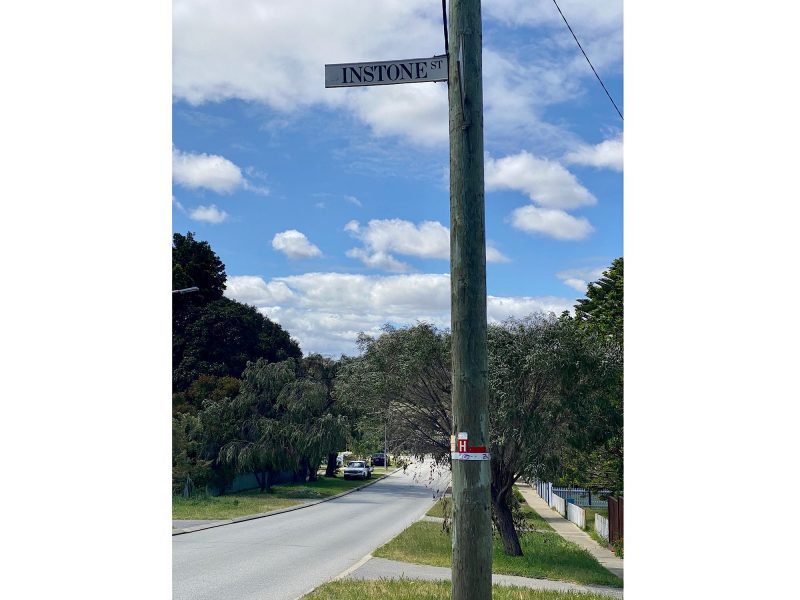
Instone Street, Hilton
FHC – after F Instone who was a plumber in Essex Street and a Town Councillor 1895-1899.
Inverleith Street, South Fremantle
FHC – after Inverleith, Scotland.
Irene Street, North Fremantle.
Ed note – More information required.
Isidore Street, North Fremantle
FHC – No longer exists – disappeared in the 1960s
Island Street, South Fremantle – No longer exists
FHC & KC – This street was in the sand drift between Rockingham Road and the ocean, South Fremantle. It formed the boundary on the south between the municipality and the Roads Board district.
Ives Close, Samson.
Ed note – More information required.
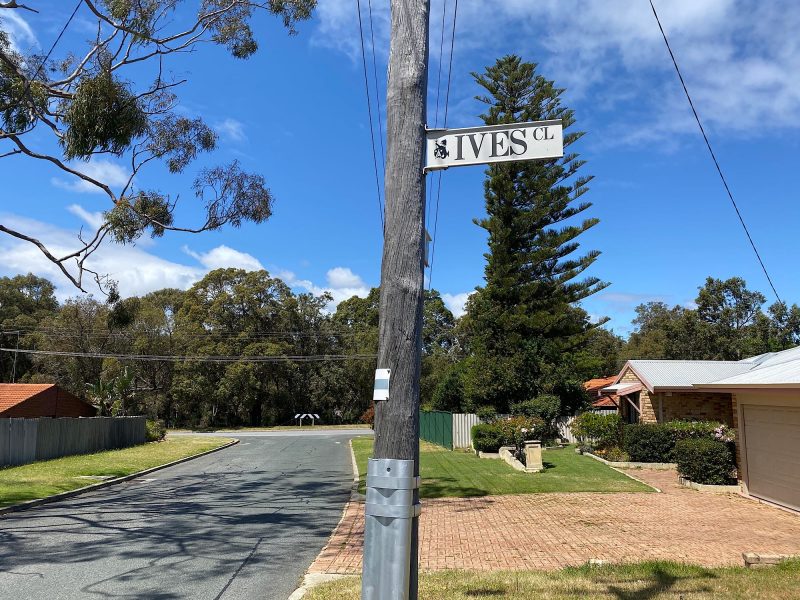
* By Michael Barker, Editor, Fremantle Shipping News
While you’re here –
PLEASE HELP US TO GROW FREMANTLE SHIPPING NEWS
FSN is a reader-supported, volunteer-assisted online magazine all about Fremantle. Thanks for helping to keep FSN keeping on!
** Don’t forget to SUBSCRIBE to receive your free copy of The Weekly Edition of the Shipping News each Friday!
